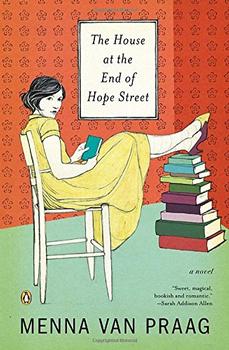Summary | Excerpt | Reading Guide | Reviews | Beyond the book | Read-Alikes | Genres & Themes | Author Bio

In Roddy Doyle's hands, everyday conversation flows like music. The pages of A Greyhound of a Girl are alive and crisp with dialog. Perhaps eighty percent of the story is told through the communication between generations - from mother to child, grandmother to granddaughter - and the lines of speech develop a unique harmony and rhythm as phrases are repeated and passed back and forth. For example in the following scene, twelve year-old Mary tells her mother about her plans to become a famous chef:
"Great idea!" said her mother.
"Stop talking like that," said Mary.
"Like what?!"
"Like !!!!!!!!!!!!!"
"Oh, no!" said her mother, whose name was Scarlett. "I don't talk like that! Do I?!"
"Yes, you do."
"What?! Always?!"
"Yes!"
"I'm sorry!" Scarlett whispered.
"Even your whispers end in !!!s," Mary whispered back.
There is a tenderness in these exchanges, and Doyle paints a picture of familial affection that seems genuine for all its sweetness. Mary, who already believes she is a teenager, may roll her eyes, but she does it lovingly. And when the ghost of Mary's great-grandmother Tansey appears on the scene, it's out of love for her daughter (Mary's grandmother) who is dying. Despite being dead, Tansey is nurturing; a kinder ghost has probably never appeared in literature:
"Do ghosts drink tea?"
"They don't," said Tansey. "But this ghost would love to see a cup of tea in front of her. It'd be lovely."
Over the generations, time has marched on and nothing has remained the same - for example, "tea" is a bag in a mug rather than loose leaves in a pot - but the sense of family identity and care has stayed constant; contemporary Mary has no trouble communicating with the long-dead Tansey. Doyle constructs his meditations on history and human connection with a light touch and an effervescent sense of humor.
This is not the kind of book that is so heart-warming it causes heartburn. Nor is it a thrilling, plot-driven novel. Instead of nail-biting conflict, Doyle gives us the lyrical drawing-out of a family story as each character recollects the important incidents in her life. The images Doyle paints of the old family farm - the worn stone trough in the barn, the thatched roof - are haunting bits of poetry. Still, the masterful dialog drives the book forward and even produces a pleasant feeling of suspense. It is hard to put down, especially as the characters scheme to pull off the "road trip" described on the book jacket, an inter-generational bonding experience. It's a book to read in one sitting.
A sensitive, thoughtful middle-grade or young teenaged girl would be the perfect reader for this book, and her mom would enjoy making an afternoon of it too. Doyle's writing reminds me that kids do not need lurid fantasy to draw them in to literature; they are thinking about big, real-life issues just as adults are.
A Greyhound of a Girl will give kids a beautiful sense of possibility as they ponder their place in history and the passage of time.
![]() This review was originally published in The BookBrowse Review in May 2012, and has been updated for the
November 2013 edition.
Click here to go to this issue.
This review was originally published in The BookBrowse Review in May 2012, and has been updated for the
November 2013 edition.
Click here to go to this issue.

If you liked A Greyhound of a Girl, try these:

The House at the End of Hope Street
by Menna van Praag
Published 2014
Filled with a colorful and unforgettable cast of literary figures, The House at the End of Hope Street is a charming, whimsical novel of hope and feminine wisdom.

by Kate Atkinson
Published 2014
What if you could live again and again, until you got it right?
Your guide toexceptional books
BookBrowse seeks out and recommends the best in contemporary fiction and nonfiction—books that not only engage and entertain but also deepen our understanding of ourselves and the world around us.